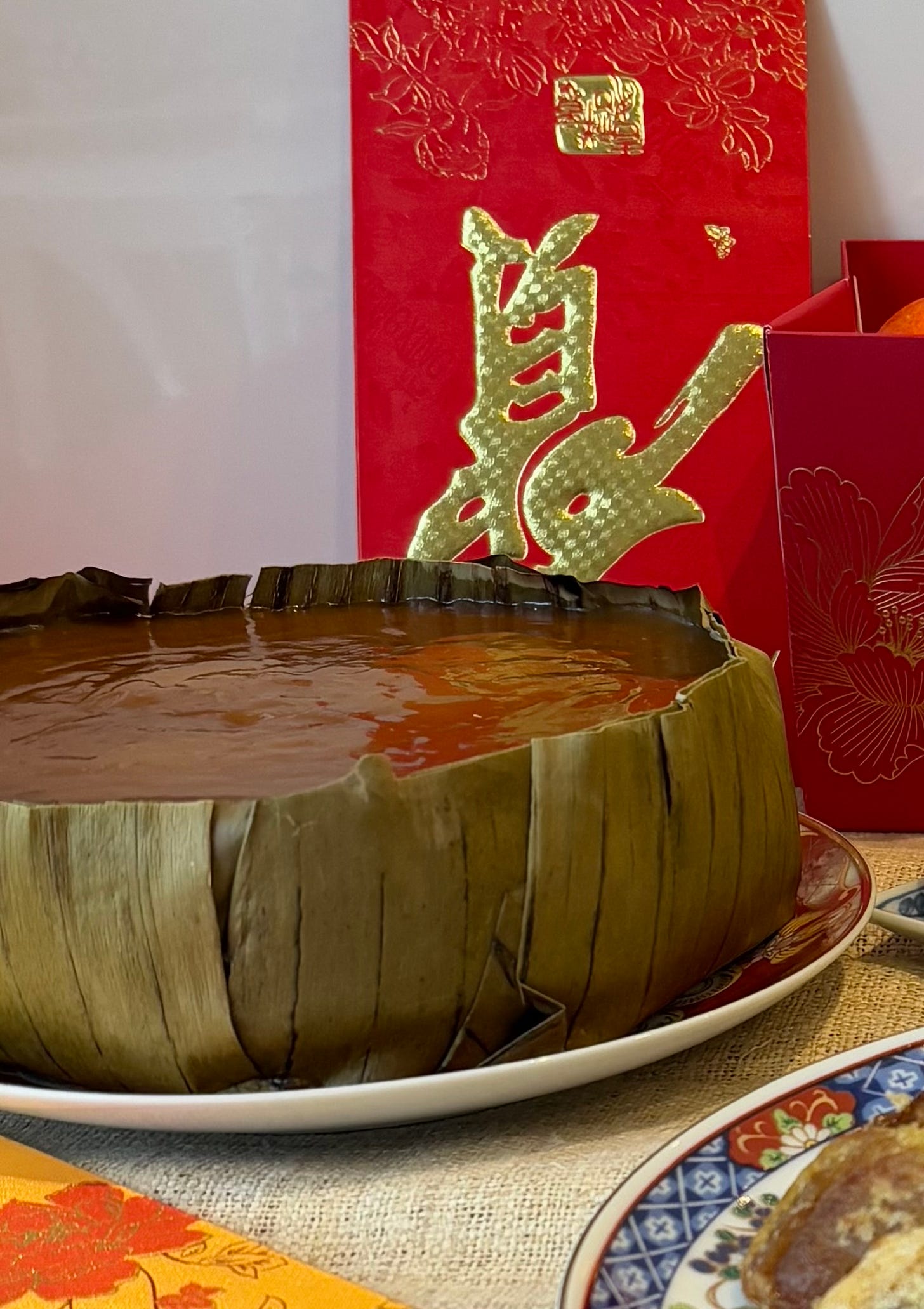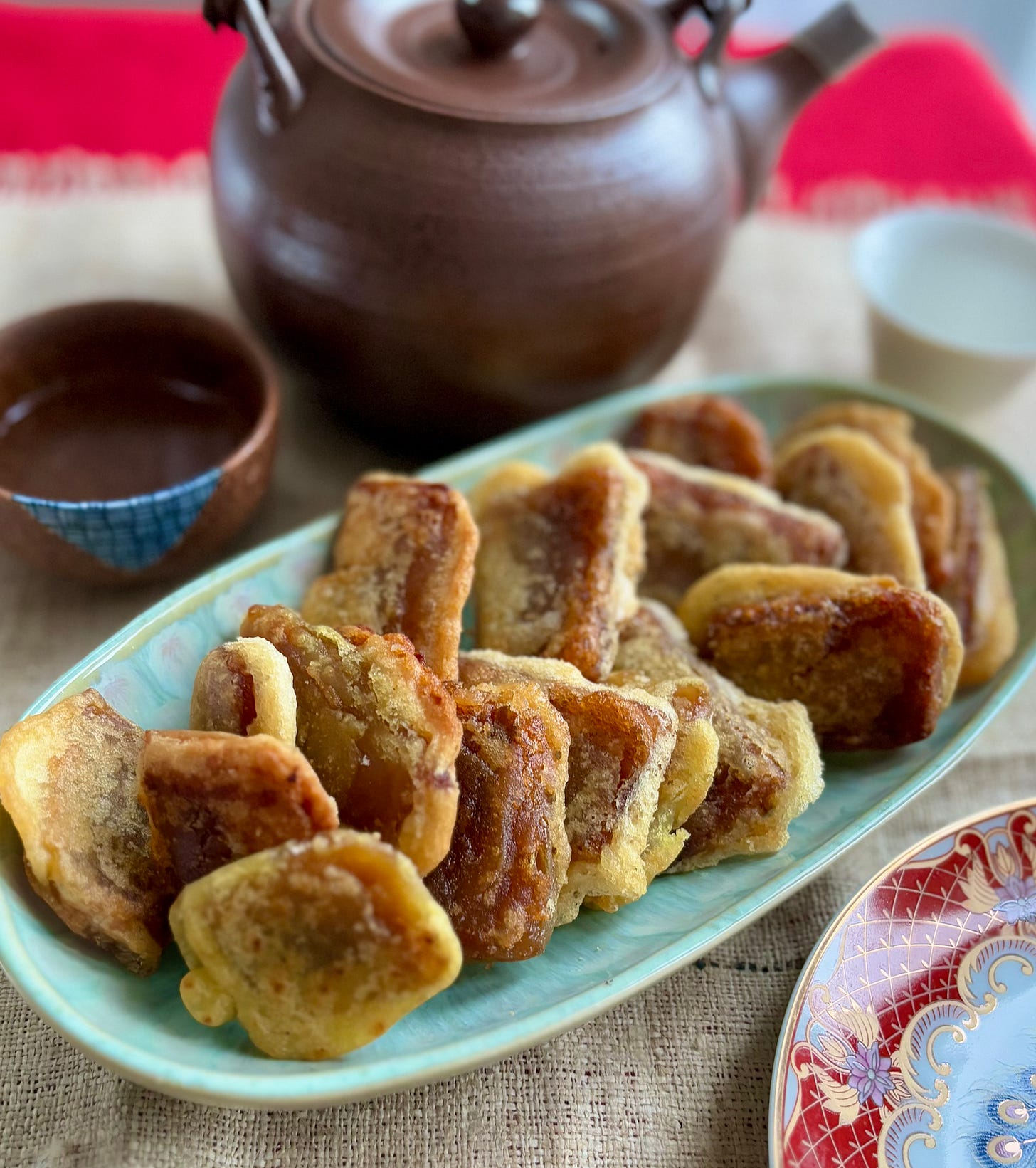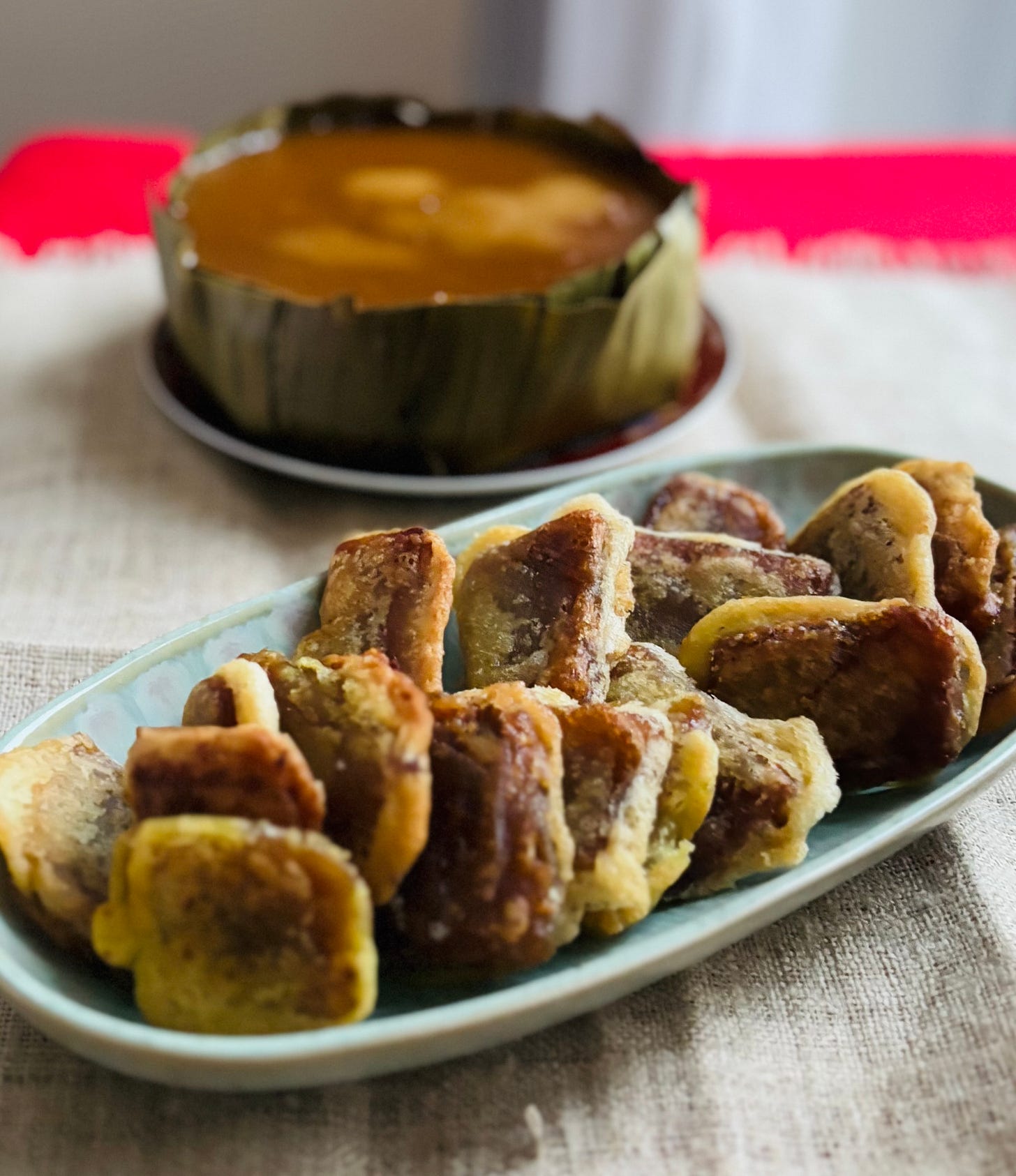Happy Lunar New Year!
I know it is a little late to be sharing a traditional recipe on the eve of the new year, even so, Chinese New Year is a 15-day festival so there is still time to make a little festive treat. My brood cannot do without their yearly fix of Nian Gao 年糕 (New Year Sticky Rice Cake) and with a little modern tech, it is a relatively easy pudding to make.
For the Chinese who are obsessed with homonyms, Nian Gao symbolises high wealth, advancement and growth for the new year ahead. Traditionally made with pounded cooked glutinous rice and sugar, the ‘cake’ is steamed for hours until the sugar begins to caramelise and darken. This, along with the banana leaf casing, imparts a more complex flavour and aroma to the sticky rice. Nowadays, glutinous rice flour and pressure cookers reduce the workload and cooking time. If you don’t live in Asia, the hardest part of the whole process is securing the ingredients, and with that, online grocers and home deliveries can always come to the rescue.
My recipe for Nian Gao has a South East Asian flair with the use of fragrant pandan leaves and Gula Melaka (dark palm sugar from Malaysia and Indonesia). It simply requires one to make an infused sugar syrup which is then mixed with sticky rice flour and steamed. Lining the cake tin with banana leaves takes a little effort but it is by no means hard. What does take a little patience is waiting for the cooked Nian Gao to cool and firm up before slicing. It can be eaten freshly made if you enjoy a very sticky and chewy texture, however, we prefer to let the Nian Gao set over a few days (or overnight in the fridge) until it can be sliced easily. Then each slice is coated in a thick savoury batter and shallow fried until crisp. The contrasts of sweet and salty, crispy yet soft and chewy is incredibly moreish and certainly worth waiting a year for.
Easy Nian Gao
This recipe uses a pressure cooker, preferably a digital one like an Instant Pot, to pressure steam the Nian Gao. If you don’t have one, cook the Nian Gao using a regular steamer for 3 hours, making sure to check and top up the water level a few times.






